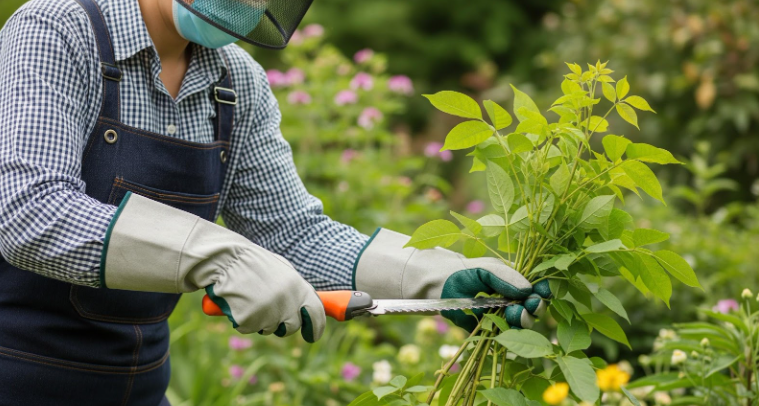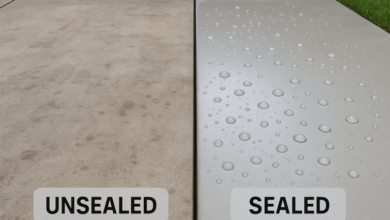Is That Itch Harmful? Talking About Getting Rid of Poison Ivy

A lot of folks assume poison ivy is just a pain in the neck. You might have a rash and some itching bumps, but you’ll be OK in a few days, right? Not always. For a lot of people, coming into contact with poison ivy can cause severe skin responses, infections, and even hospitalization in rare situations.
That’s why getting rid of poison ivy is more than just a decorative job in the yard. It’s very important for health and safety, especially for families, pet owners, and people who spend time outside. We’ll explain all you need to know about how poison ivy affects the body and why it’s important to remove it the right way in this post.
When an itch gets out of hand
Urushiol, an oil present in the leaves, stems, and roots of poison ivy, causes an allergic reaction. When it meets your skin, it immediately binds and starts an immunological reaction, which normally happens within 12 to 48 hours.
Most of the time, symptoms are moderate, but they can be severe:
- Itching and redness
- Puffiness and blisters
- Sores that ooze and take weeks to heal
But for other people, the reaction goes deeper than the skin. If urushiol enters into the bloodstream through open cuts, is breathed in (from burning plants), or is passed on to sensitive parts like the face or eyes, things can get worse very quickly.
When to See a Doctor About Your Rash
When a poison ivy rash stops being something you can treat at home and has to be checked by a doctor:
- The rash is spreading quickly or is covering a lot of your body.
- Blisters are bleeding pus or showing indications of infection.
- You have a fever, chills, or are tired.
- Your eyes, mouth, or genitals are hurt.
You have trouble breathing, which is commonly caused by breathing in smoke from burning poison ivy.
Doctors may give corticosteroids, antibiotics, or antihistamines to people who have severe responses to help with symptoms and stop problems from getting worse.
See also: Bathroom Remodeling Sacramento Services That Add Value to Your Home
How Poison Ivy Spreads, Even When the Plant Isn’t There
One of the most shocking things about poison ivy is that you don’t have to be close to the plant to get a rash.
Urushiol oil can attach to:
- Gloves for gardening
- Tools and gear
- Fur from pets
- Door handles or car seats
- Clothes and shoes
Even a small amount of this residue can produce a full-blown reaction, and it can stay active for months. That’s why getting rid of poison ivy shouldn’t simply mean uprooting the plants; it should also include getting rid of the residue.
👉 How to Decontaminate Yourself After Poison Ivy Exposure
Why DIY Removal Is More Dangerous Than You Think
If you see poison ivy creeping up to your fence or garden, it’s easy to want to put on some gloves and get to work. But getting rid of it isn’t as easy as removing weeds.
Here are some things that could go wrong:
- When you break the plant, more urushiol gets into the air or on your skin.
- Not removing all of the roots makes them grow back quickly.
- When you burn poison ivy, it emits urushiol into the smoke, which can hurt your lungs if you breathe it in.
It’s hard to get rid of yard garbage, too. You should never put poison ivy in your compost pile or leave it on the curb for pickup unless your city or town knows how to do it securely.
Safe and Effective Ways to Get Rid of Poison Ivy
There are two major strategies to get rid of poison ivy:
1. Treatments with chemicals
Some selective herbicides can destroy poison ivy, but most need to be used several times and at the right times. To avoid exposure, you should only use these goods as directed on the label and use all the right safety gear.
2. Services for professional removal
Companies like Poison Ivy Free offer professional removal that takes rid of both the plant and any urushiol that is still there. Their trained personnel employ innovative technologies, safe disposal methods, and ways that have worked in the past to stop regrowth.
If the poison ivy is growing in a busy area, near pets or kids, or has come back even after you tried to get rid of it yourself, contacting a pro is the best thing to do.
Don’t ignore the warning signs.
If your skin keeps breaking out, your pets keep itching, or the same patch of ivy comes back every year, you need to do something.
If you wait too long, you might have:
- Several outbreaks
- High medical bills
- Outdoor gear that is dirty
- Damage to your grass or garden that lasts a long time
Time to Get Rid of Poison Ivy Really
At first, that bothersome itch might not seem like a big deal, but poison ivy can rapidly become a painful, expensive, and long-lasting condition. And it can get worse the longer you wait.
If you have a stubborn patch or rashes that keep coming back for no reason, don’t guess—get advice from a specialist. Poison Ivy Free is a safe and professional poison ivy removal company with locations all across the East Coast. Their crew knows how to get rid of the plant, neutralize the oil, and keep your property safe for a long time.




